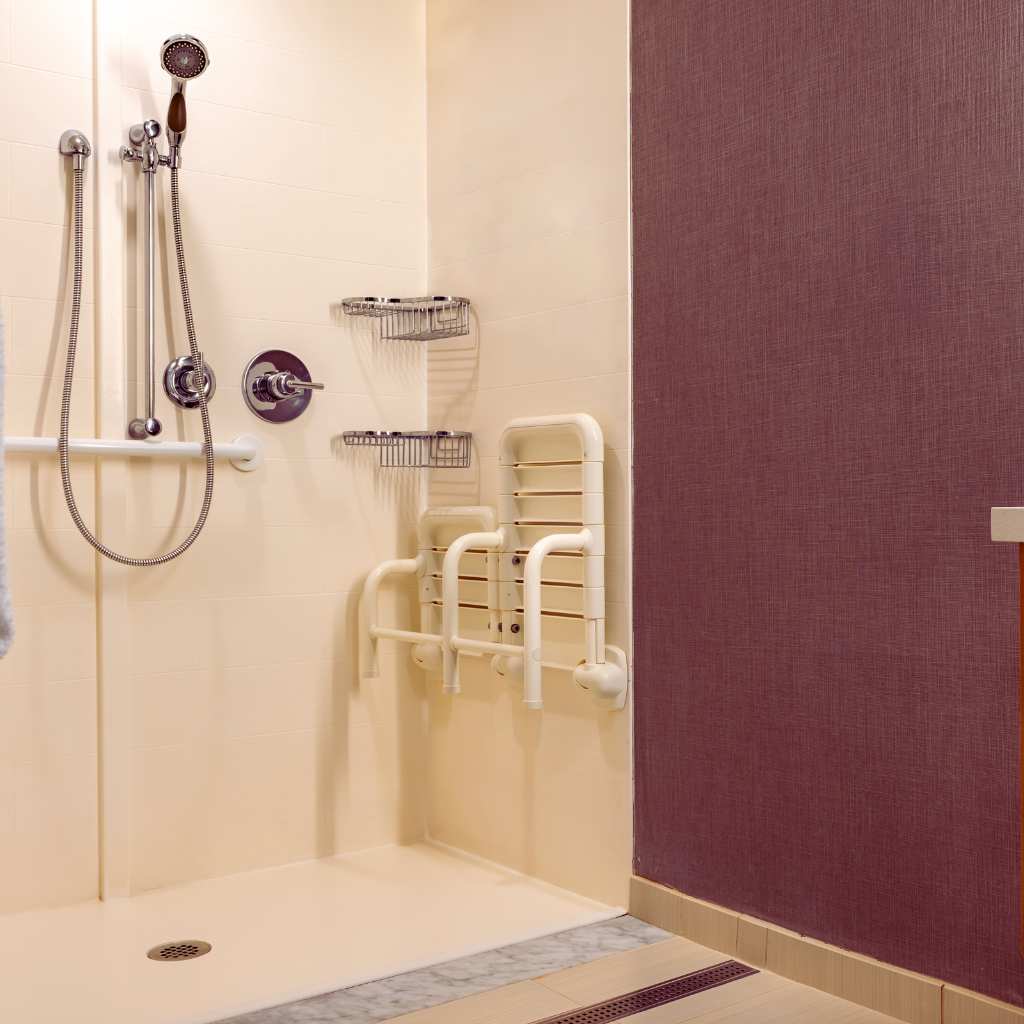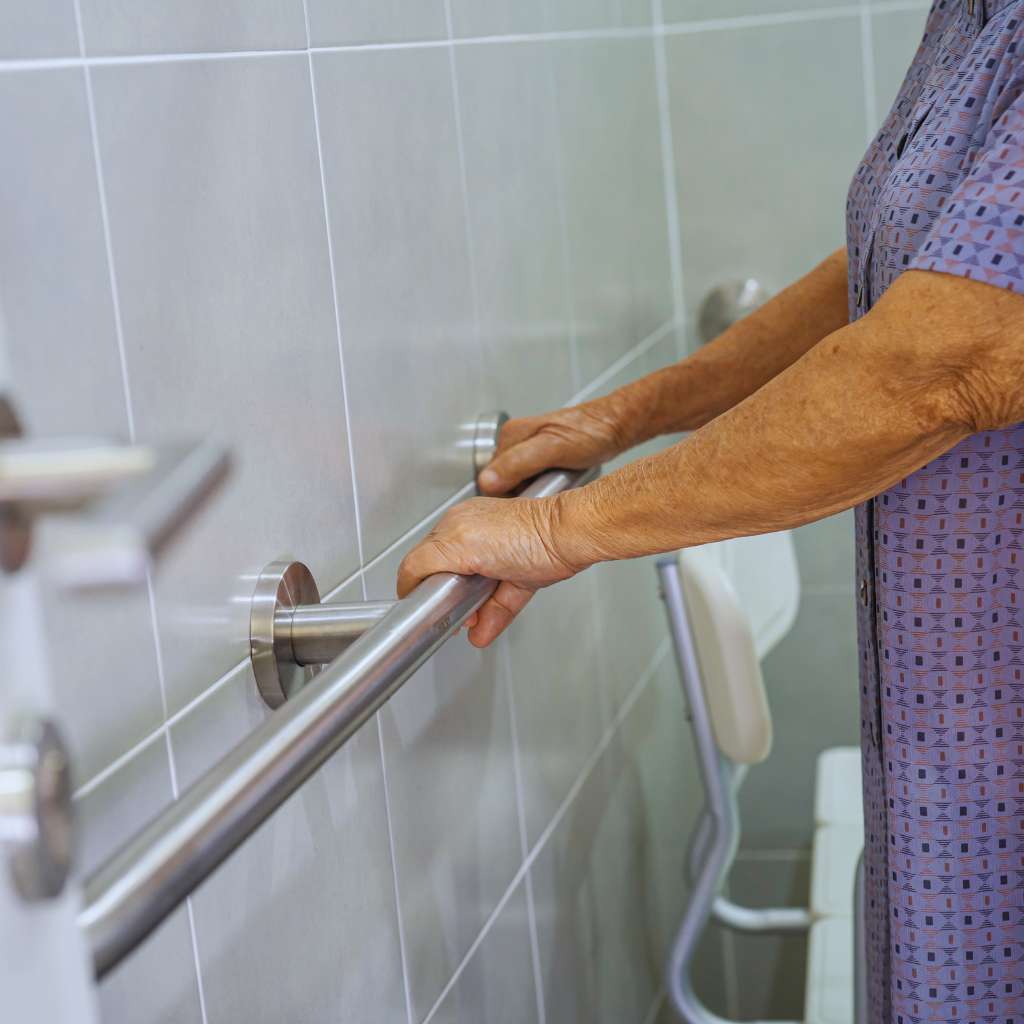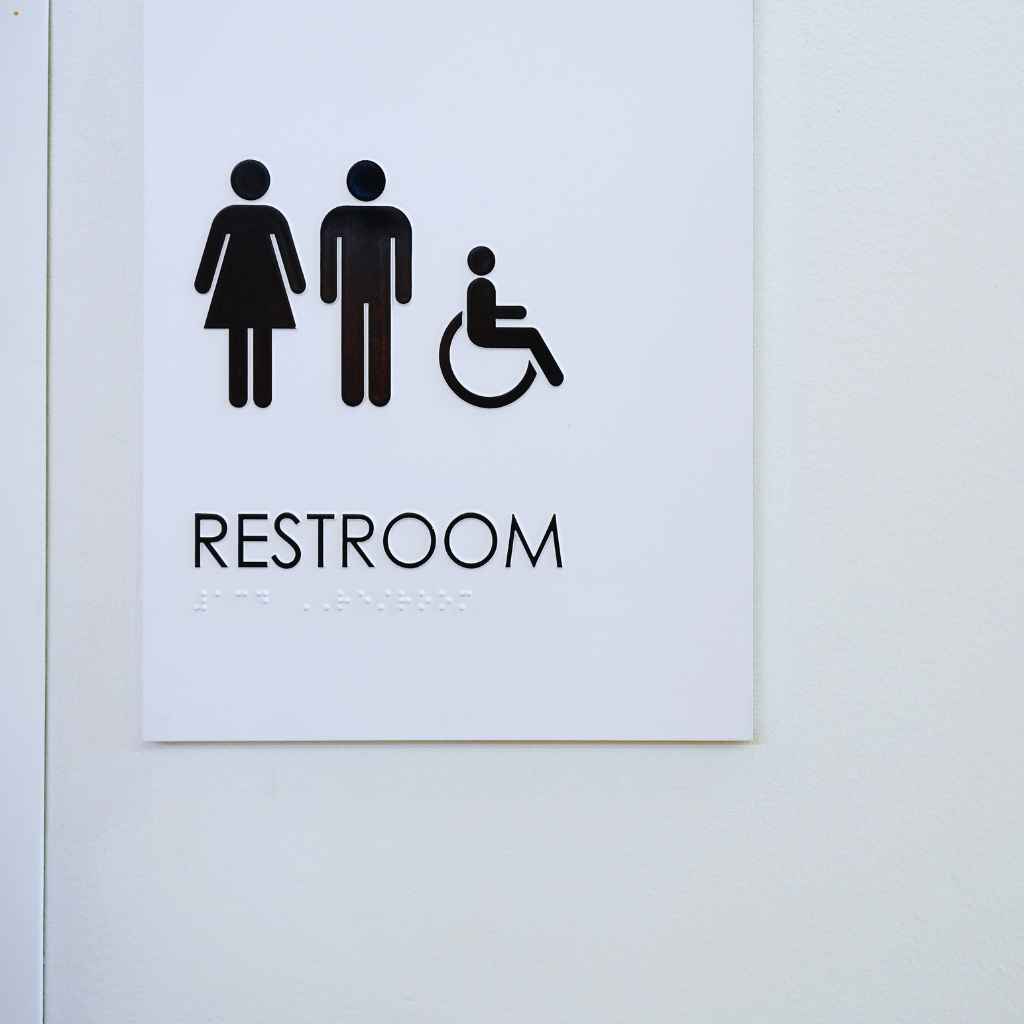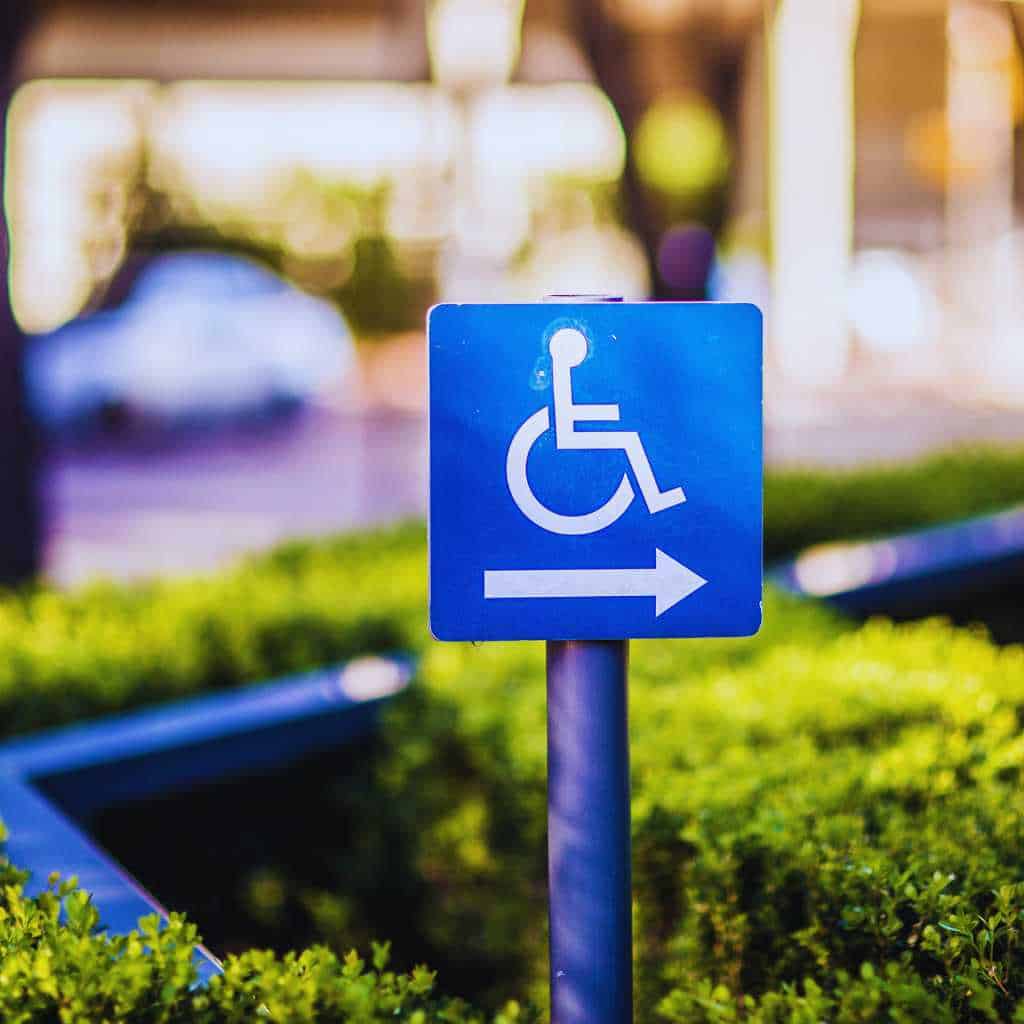Make Your San Diego Restroom ADA Compliant | Step-by-Step Upgrade Guide
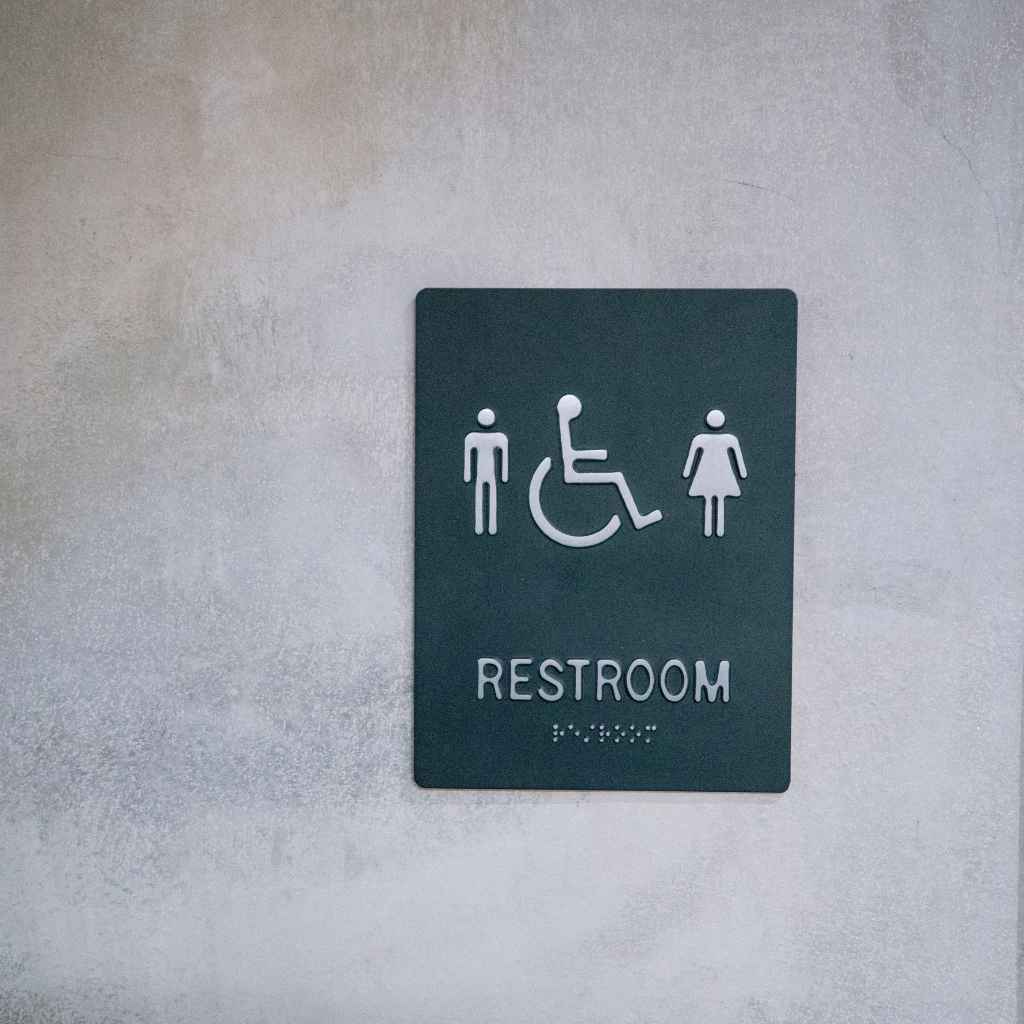
ADA restroom compliance means your facilities are accessible, navigable, and usable by people with disabilities—without barriers. In California, that doesn’t just mean following the federal ADA. It also means meeting additional design standards under Title 24, Chapter 11B of the California Building Code.
San Diego property owners can’t afford to ignore this. Lawsuits tied to restroom accessibility are common in California, and violations often come down to overlooked details—like a mirror mounted too high or a toilet without the right grab bars. Even if the building is older, you’re still responsible for making reasonable modifications.
This guide lays out what you need to know: which rules apply, what upgrades are required, how to avoid penalties, and how to get your space properly inspected and certified. You’ll get the essentials—from layout clearances to signage to fixture specs—so you can fix problems before they turn into legal or financial threats.
Let’s start with the basics.
Quick Overview: What ADA Restroom Compliance Means in California
If you’re upgrading or inspecting a restroom in California, you’re working under two sets of rules: the federal ADA Standards for Accessible Design (2010) and California’s Title 24, Chapter 11B. You need to comply with both. Many property owners assume that following one automatically covers the other but that’s not the case. California’s standards are often stricter, and overlooking those differences is where most violations happen.
Let’s break down the key compliance layers.
What Are the Core Requirements Under the 2010 ADA Standards?
Yes—ADA-compliant restrooms must meet specific layout, clearance, and fixture rules. These include:
Toilet clearance: Minimum 60-inch width and 56-inch depth for wall-mounted toilets (ADA §604.3)
Turning radius: 60 inches clear floor space for a wheelchair to rotate
Grab bars: 33–36 inches above the floor, installed behind and beside the toilet
Sink access: Max 34 inches high, with knee clearance underneath (ADA §606.3)
Door width: At least 32 inches clear opening, with hardware operable by one hand
These are non-negotiable under federal law. If your layout doesn’t support them, you’re not compliant—even if the restroom “feels accessible.”
What Extra Requirements Are in California Title 24?
California adds additional rules that go beyond federal ADA standards. These are enforced through Title 24, Part 2, Chapter 11B of the California Building Code. Some of the most commonly missed additions include:
Door pressure: Must not exceed 5 pounds to open (CBC §11B-404.2.9)
Mirror height: Edge of the reflective surface no more than 40 inches from the floor
Signage requirements: Tactile signs with raised characters and Braille (CBC §11B-703)
Visual alarms: Required in restrooms where audible alarms are present
Ignoring these can still trigger a violation even if your space passes federal ADA.
Do Office or Private Bathrooms Need to Be ADA Compliant in California?
Yes, if the restroom serves the public or employees, it must comply with ADA and Title 24.
California does not “grandfather” older buildings out of compliance. Even existing facilities must be retrofitted when readily achievable, especially if open to customers, patients, tenants, or the general public.
If the restroom is employee-only, it’s still subject to reasonable accommodation standards and may require modifications under both ADA Title I and California labor codes.
In San Diego, enforcement can come from multiple directions:
City inspectors during permit applications or remodels
CASp evaluations, which highlight non-compliance during accessibility audits
Demand letters or lawsuits filed by individuals under the Unruh Civil Rights Act, often targeting restrooms
Bottom line: if people use the restroom, and it’s in a business or facility setting, it needs to comply.
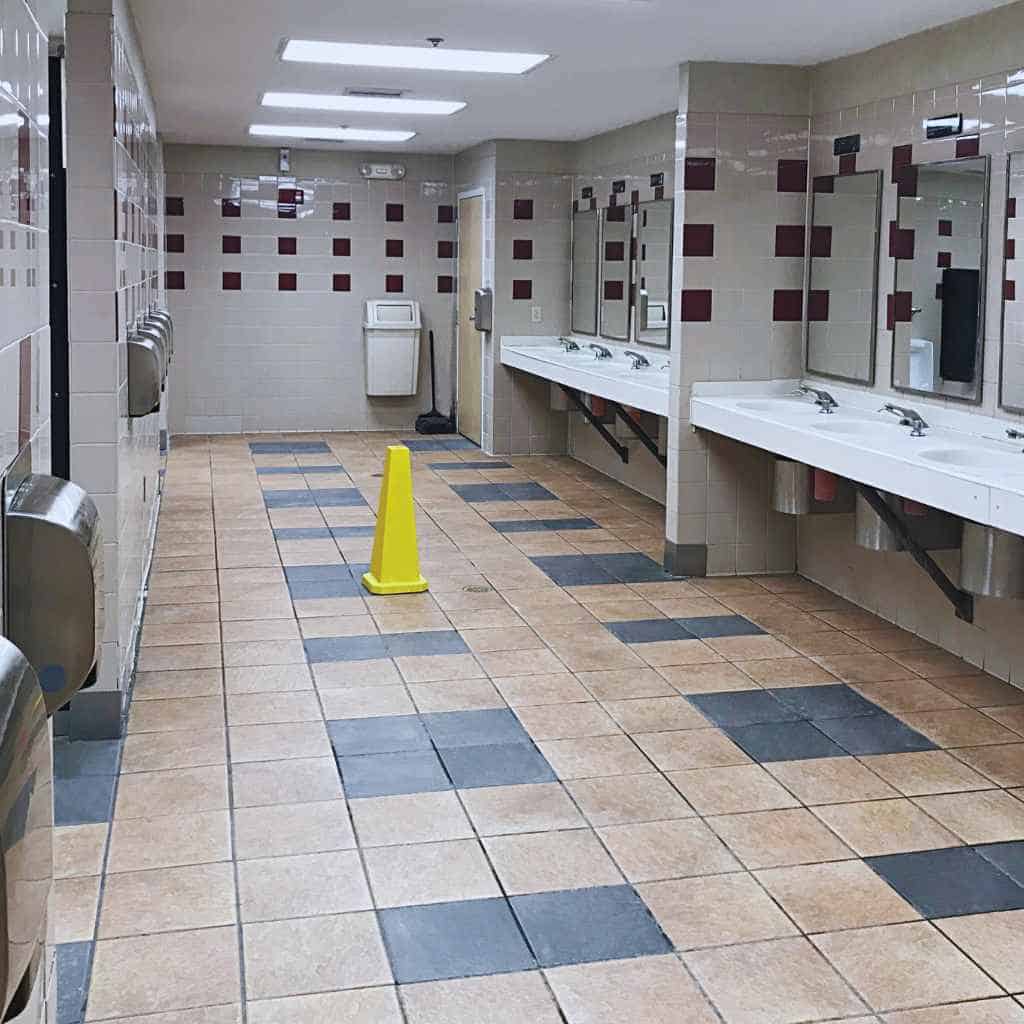
ADA Compliance Checklist for Existing Restrooms
If you’re working with an existing restroom, you won’t always have the luxury of a full remodel—but that doesn’t let you off the hook. Under both federal ADA regulations and California’s Title 24, Chapter 11B, you’re expected to remove barriers wherever it’s “readily achievable.” That means you must make improvements when it’s reasonable to do so, given your resources and building conditions.
Here’s how to approach that process the right way.
Conduct a CASp Inspection (And Why It Matters)
Yes, your first step should be getting a CASp inspection—especially in California.
A Certified Access Specialist (CASp) is a professional certified by the state to evaluate your property’s compliance with accessibility laws. They’re not just inspectors they’re legal protection.
Here’s why it matters:
Legal Shielding: A CASp inspection, when done before a complaint is filed, qualifies you for “qualified defendant” status under California law (Civil Code §55.53). That limits your liability in a potential lawsuit.
Clear Roadmap: You’ll receive a written report identifying violations, ranked by severity and urgency.
Phased Corrections: CASp pros help prioritize upgrades so you don’t spend money fixing something low-risk while overlooking a major issue.
In San Diego, getting a Certified Access Specialist review is often the difference between a quiet fix and an expensive legal battle.
Measure Key Access Points
Yes, measurements matter—and they’re where most violations are found.
Start with the basics:
Door clearance: At least 32 inches of clear opening when the door is open at 90 degrees (ADA §404.2.3)
Stall dimensions: Accessible toilet compartments must be at least 60 inches wide and 56 inches deep for wall-mounted toilets (ADA §604.3)
Turning space: A 60-inch diameter is required for a wheelchair to rotate within the restroom (ADA §304.3.1)
These issues are often uncovered during onsite accessibility inspections, where exact measurements can reveal small but costly errors.
Example: One San Diego café was sued because a trash bin inside the stall narrowed the clear floor space below the 60-inch requirement something easily fixed, but missed until it cost them $5,000 in settlement fees.
Upgrade Fixtures and Finishes
Yes—restroom hardware has very specific requirements under both ADA and Title 24.
Here’s what to check and upgrade:
Toilet height: Between 17–19 inches from the floor to the top of the seat (ADA §604.4)
Grab bars: Must be 33–36 inches above the floor, and installed on the rear and side walls of the stall
Sink clearance: Maximum 34 inches high with at least 27 inches of knee clearance underneath (ADA §606.3)
Faucets: Must be operable with one hand, without tight grasping or twisting (lever or sensor-activated preferred)
Dispenser placement: Toilet paper must be 7–9 inches in front of the toilet and 15–48 inches above the floor (ADA §604.7)
If your layout doesn’t support compliant turning space or fixture placement, bathroom consulting services can help you plan practical changes without tearing the whole space apart.
Address Signage and Visual Aids
Yes—signage is regulated, and it’s one of the most common areas for non-compliance.
California Title 24 has specific signage rules in addition to federal ADA:
Restroom identification signs: Must include tactile text and Braille, mounted on the latch side of the door, 48–60 inches above the floor (CBC §11B-703.4)
Pictograms: If used, must be accompanied by text labels
Design standards: Fonts must be sans serif, uppercase, and high-contrast
Also required in some cases: visual alarms (flashing strobe devices) if the building has an audible fire alarm system.
Tip from San Diego CASp pros: Many local violations happen in restaurants and salons due to incorrect sign height or missing Braille altogether easy to fix if caught early.
Re-inspect and Certify
Yes—you should follow up with a CASp once upgrades are complete.
Here’s why it matters:
Updated Documentation: The CASp will reissue an inspection report showing that violations have been corrected.
Proof for Future Tenants/Sales: Many commercial tenants and real estate buyers now ask for proof of ADA compliance as part of due diligence.
Legal Leverage: If you’re ever sued, having updated CASp documentation strengthens your defense—and may reduce liability significantly.
Cost Factors: What to Expect When Upgrading for ADA
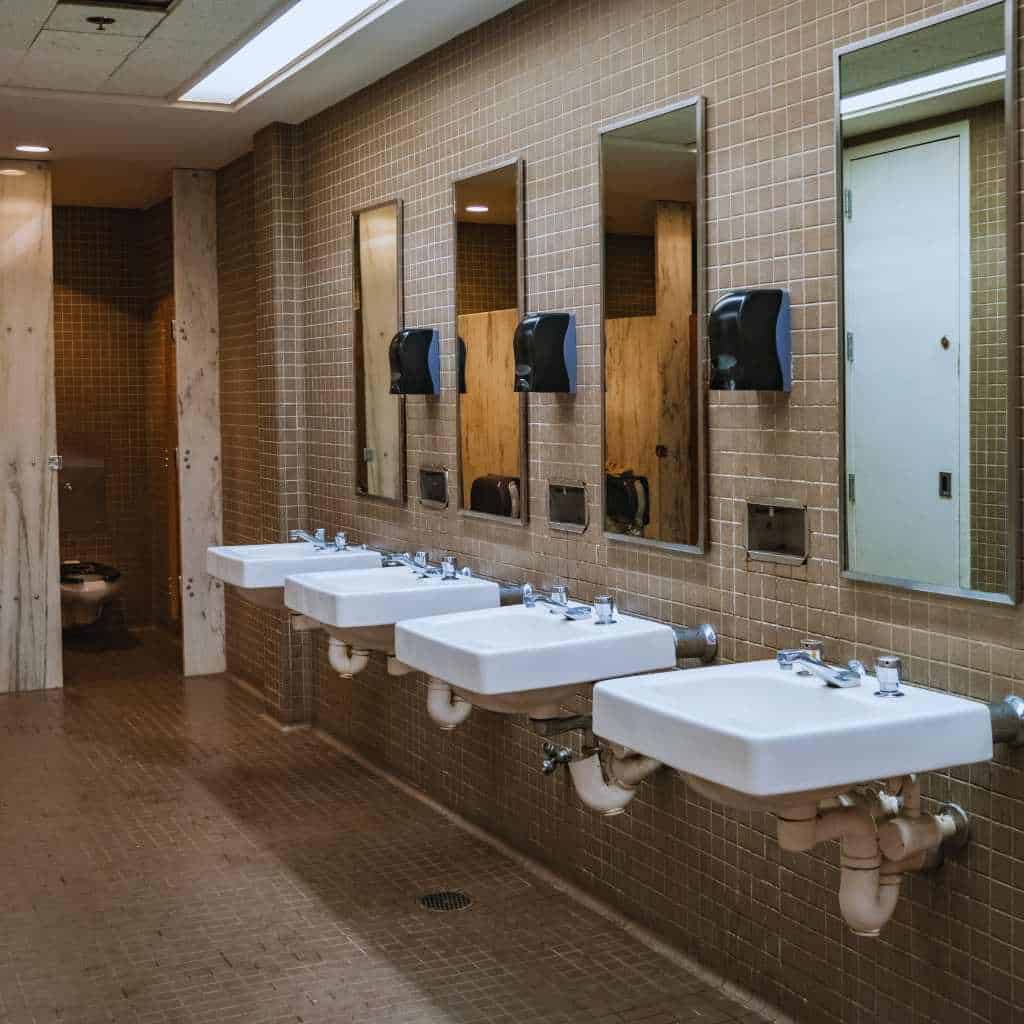
Common ADA Restroom Mistakes (And How to Avoid Them)
The cost of making a restroom ADA compliant depends on how far off the mark your current setup is. In California, particularly in cities like San Diego, older buildings tend to have more issues narrow stalls, inaccessible fixtures, and missing signage so retrofit costs can vary widely.
Still, there are some typical patterns based on the scale of work required and the most common violations.
What Are the Typical Upgrade Costs in San Diego?
Yes—ADA restroom upgrades can range from a few hundred to several thousand dollars, depending on the scope.
Here’s a realistic breakdown of what you might expect to spend:
Tactile signage: $150–$300 per restroom for ADA-compliant Braille signs installed at the correct height
Grab bars: $100–$400 installed (depending on material and wall reinforcement needs)
Toilet partition modifications: $1,200–$2,500 if repositioning is required for stall clearance
Sink and faucet replacement: $700–$1,800 depending on plumbing work and fixture choice
Door hardware upgrades: $250–$600 to meet operability and pressure standards
CASp inspection: Typically $800–$2,000 depending on property size and report detail
If you’re budgeting for a full overhaul or want to pre-empt future litigation, it’s smart to consult with a specialist before spending on upgrades that may not resolve the core compliance issue.
Are There Tax Credits or Financial Assistance for ADA Compliance?
Yes—the IRS offers a federal tax credit for small businesses making ADA-related improvements.
Here’s how it works:
Form 8826 – Disabled Access Credit
If your business has $1 million or less in annual revenue or fewer than 30 full-time employees, you can claim up to $5,000 in annual credit for eligible access expenses.
This includes the cost of barrier removal, sign upgrades, and even CASp inspections in some cases.
At the state level, California does not currently offer a standalone ADA compliance grant program for private businesses. However:
Some local municipalities and development incentive programs (like those tied to permit streamlining or small business improvements) may offer reimbursement or fee waivers for ADA upgrades. These vary by city and funding cycle, so it’s worth checking with the San Diego Development Services Department or Office of Small Business for current options.
Important: Credits and funding do not excuse non-compliance. They help, but you’re still legally obligated to meet ADA and Title 24 standards.
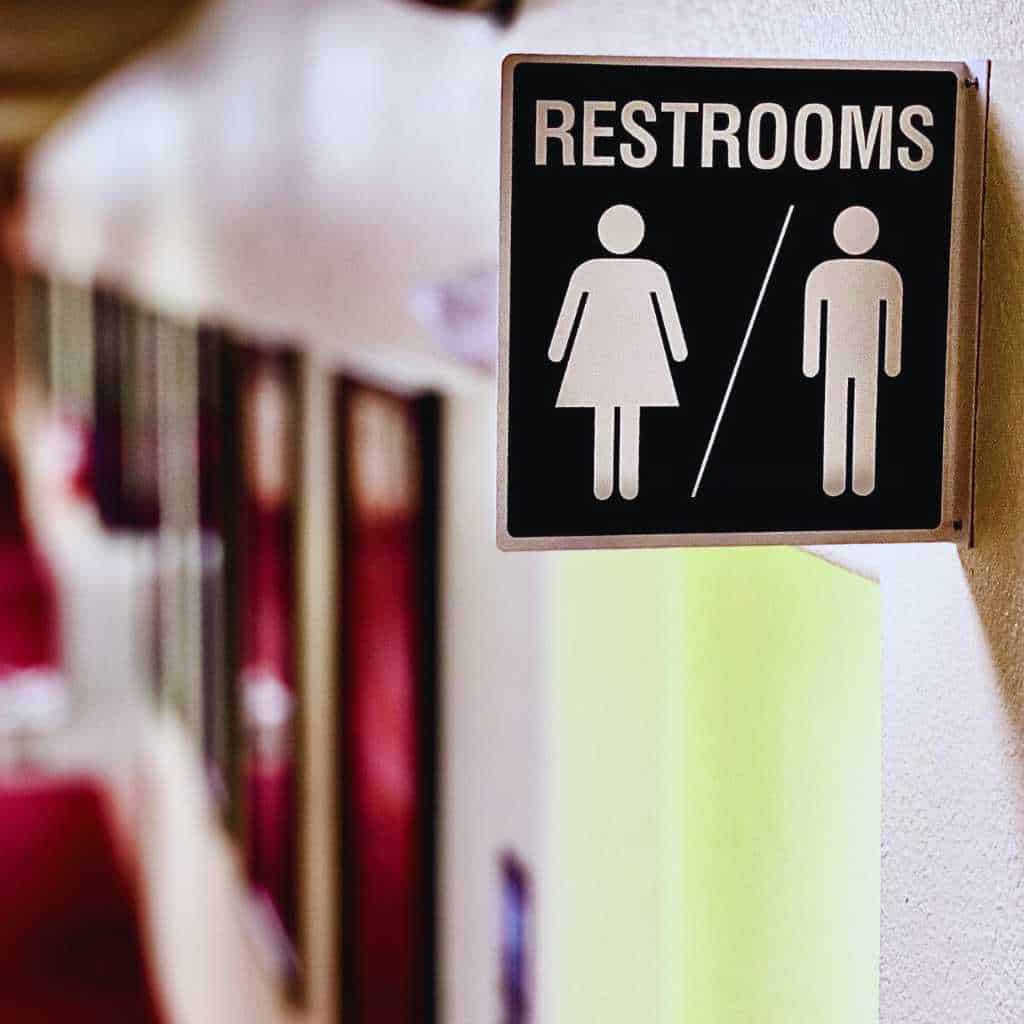
Need-to-Know Insights on ADA Restroom Compliance in California
If you’ve made it this far, you’ve probably realized that ADA restroom compliance in California isn’t something you can guess your way through. It’s a legal obligation—and one that comes with real financial consequences if done wrong.
Here’s what you need to keep in mind before calling the job done:
ADA applies to all San Diego public and commercial restrooms. Whether you’re running a café, office, clinic, or retail space if the public or employees use the restroom, it needs to meet accessibility standards. There’s no grandfather clause for older buildings.
CASp inspections are your best first step. Not only do they identify violations, but they also give you legal protections if a claim is filed later. A proactive inspection can save you thousands and help you prioritize what really needs fixing.
California’s Title 24 adds more rules than federal ADA. Many property owners make the mistake of following only the federal checklist. But things like door pressure, mirror height, and sign placement are governed by state-specific codes—and they’re just as enforceable.
Fixing common layout and signage errors helps you avoid lawsuits. Most legal claims come down to simple, avoidable mistakes: a grab bar mounted too high, a missing Braille sign, or a stall door that blocks maneuvering space. These are fixable—if you know where to look.
San Diego businesses don’t just need to comply—they need to be smart about how they do it. Understanding these foundational points is how you avoid the scramble after a legal demand hits your inbox.
Even well-meaning property owners miss critical compliance points. Most violations aren’t caused by negligence they’re caused by misunderstanding the rules, skipping inspections, or relying on contractors who aren’t trained in ADA or Title 24.
Here are the most common issues seen in California restroom compliance reviews and how to prevent them before they cost you.
Incomplete Clearances or Obstructed Pathways
Yes—this is the most frequent violation in older and retrofitted restrooms.
A compliant layout requires open, unobstructed space for maneuvering. But in practice, things get in the way:
-
Trash bins tucked in corners that reduce turning space
-
Toilets placed too close to the side wall, leaving less than the required 16–18 inches of centerline clearance
-
Paper towel dispensers or shelves that intrude into the 60-inch turning radius
These small details can result in immediate violations. One inspection report in a San Diego retail complex cited three different restrooms for stall doors that swung inward and blocked access to the grab bars requiring expensive door reconfiguration after the fact.
Non-Compliant Signage or Labels
Yes—signs must meet specific design and installation rules to pass.
California requires:
-
Braille and tactile characters mounted 48–60 inches from the floor on the latch side of the door
-
High-contrast fonts (sans serif, all caps, non-italicized)
-
Proper pictogram spacing if used alongside text
Many businesses simply hang decorative or printed restroom signs that don’t meet code. That’s an easy fix if caught before a complaint.
Uninspected DIY Upgrades That Still Violate Code
Yes—doing your own remodel without professional guidance can lead to hidden violations.
A common scenario: the fixtures look updated, the surfaces are clean, and the layout feels modern—but the technical specs are still off. For example:
-
Sink too high by two inches
-
Mirror edge too far above the required 40 inches
-
Grab bars installed at the wrong height or angle
This happens often in DIY remodels or contractor-led jobs without a CASp involved. One business owner in San Diego only discovered the issue after receiving a legal demand letter from a private plaintiff. They thought the remodel brought them into compliance it didn’t.
Avoid this by involving a Certified Access Specialist early, and double-checking everything against both ADA and Title 24 specs.
Local San Diego Enforcement: What Property Owners Need to Know
ADA isn’t just enforced by federal agencies. In California and especially in San Diego there are multiple ways violations are brought forward. Some are official. Others come through lawsuits. And both can cost you.
City Building Inspectors, Civil Attorneys, and CASp
Yes—ADA compliance in San Diego can be enforced by public officials or private lawsuits.
Here’s who you’re dealing with:
-
City building inspectors, who may flag restrooms during permit reviews or renovations
-
Private attorneys, filing claims under the Unruh Civil Rights Act (CA Civil Code §51) for $4,000 per violation
-
CASp inspectors, whose reports don’t carry legal weight by themselves—but protect you if used proactively
California has seen a rise in serial filers individuals who visit businesses, document accessibility barriers, and file multiple lawsuits. These are legal, and courts have upheld their right to file. San Diego has been no exception.
What Happens If You’re Not Compliant
Yes—you can be sued, and penalties in California are steep.
Under the Unruh Civil Rights Act, each violation can result in:
-
$4,000 in statutory damages per visit
-
Attorney’s fees for the plaintiff
-
Required corrective action (often under tight deadlines)
Even a single violation like a sink that’s too high or a sign that’s missing Braille can trigger this. And once one issue is found, most claims list multiple violations, compounding your financial exposure.
Common Questions About ADA Restroom Compliance in California
What is required for an ADA compliant restroom in California?
ADA-compliant restrooms must meet federal and state accessibility standards for layout, fixtures, signage, and access.
At a minimum, this includes:
60-inch turning radius for wheelchairs
Properly placed grab bars (33–36 inches high)
Accessible sink with 34-inch maximum height and 27-inch knee clearance
Entry doors with at least 32 inches of clear width
Braille and tactile signage mounted at the correct height
California’s Title 24, Chapter 11B adds stricter rules on door pressure, mirror height, visual alarms, and font contrast. To be compliant in California, you must meet both ADA and Title 24 requirements.
Do small businesses in San Diego need an ADA bathroom?
Yes—if your business is open to the public or has employees, your restroom must comply.
There are no exemptions based on business size in California. Even small shops, offices, or service providers are expected to provide readily achievable access under the ADA. And if you make alterations to your facility, California law requires you to upgrade the path of travel and restroom access to current code as part of the building permit process.
How do I avoid getting sued for ADA violations?
Get a CASp inspection before a complaint is filed—and fix the high-risk violations identified.
In California, lawsuits can be filed under the Unruh Civil Rights Act, with $4,000 per violation, plus attorney’s fees. Most suits cite multiple restroom issues like improper grab bar placement or missing signage.
A CASp inspection gives you legal protections if done proactively, and provides a prioritized plan for fixing problems. You can also request a reasonable timeline for corrections if you’ve shown good faith effort to comply.
Is a CASp inspection required by law in California?
No, it’s not legally required—but it’s one of the smartest moves you can make.
A Certified Access Specialist (CASp) inspection is voluntary, but highly recommended. If completed before a legal claim is filed, it gives you “qualified defendant” status under state law. That means:
Reduced financial penalties
Extended time to make improvements
Legal credibility in showing due diligence
Many California property owners now request CASp reports before buying, leasing, or renovating commercial spaces.
What’s the turning radius for a wheelchair in a bathroom?
The required turning radius is 60 inches of clear floor space.
This means a full, unobstructed circle 60 inches in diameter—enough for a wheelchair to complete a 180- or 360-degree turn. This clearance must be provided inside the accessible stall or elsewhere in the restroom if stalls are too tight.
Objects like trash bins, toilets too close to the wall, or inward-swinging doors can reduce this space and lead to violations. It’s one of the most common issues found during CASp inspections in California restrooms.
Next Steps for San Diego Property Owners Working Toward ADA Compliance
If you’re a property owner or business operator in San Diego, ADA restroom compliance isn’t optional—it’s enforceable. What this really means is: waiting until someone files a complaint or demand letter isn’t a strategy. It’s exposure.
At this point, your best next step is to schedule a Certified Access Specialist (CASp) inspection. It’s the only way to know exactly where your restroom falls short—and more importantly, how to fix it in a way that holds up to California’s dual requirements under ADA and Title 24, Chapter 11B.
Once you have your report, prioritise the high-risk violations first—especially anything related to clearances, signage, or fixture height. These are the issues most commonly cited in lawsuits and often the easiest to resolve with the right guidance.
If you’re unsure where to start or need help planning upgrades, our bathroom consulting services are designed to help you comply without overspending or overbuilding. We work with property managers, contractors, and business owners across San Diego to close compliance gaps before they turn into legal risk.
Want to go deeper? You might also like our guide on ADA Parking Lot Compliance in California—another high-risk area where violations are often overlooked.
Referenced ADA Standards and California Codes

Written by Emily Johnson
Emily Johnson is a Certified Access Specialist (CASp) Inspector and is passionate about making spaces accessible for all. With over 10 years of experience and degrees in Civil Engineering and Architecture, she inspires others while championing ADA awareness.
RECENT POSTS
CATEGORIES
Get a free quote today!
By clicking “Submit”, you are signing up to receiving emails from us. You can unsubscribe whenever you like. SMS rates may apply.
Want To Know More About ADA Accessibility And How To Get Compliant?
Check out our blog!

